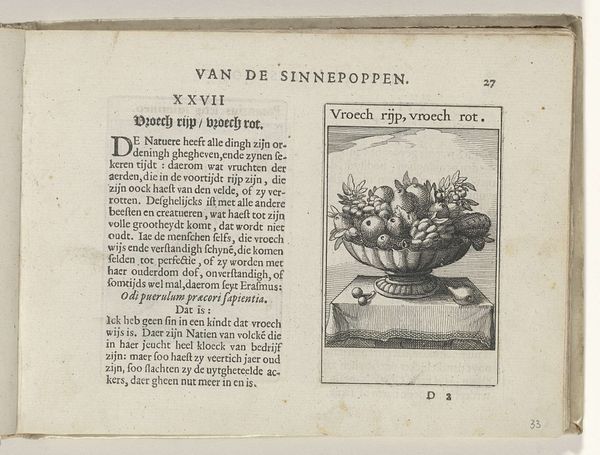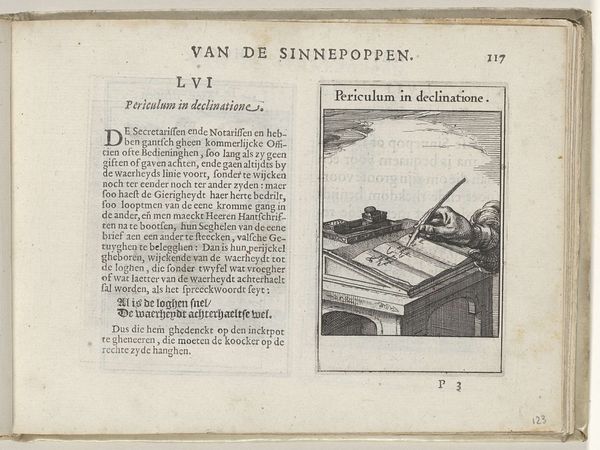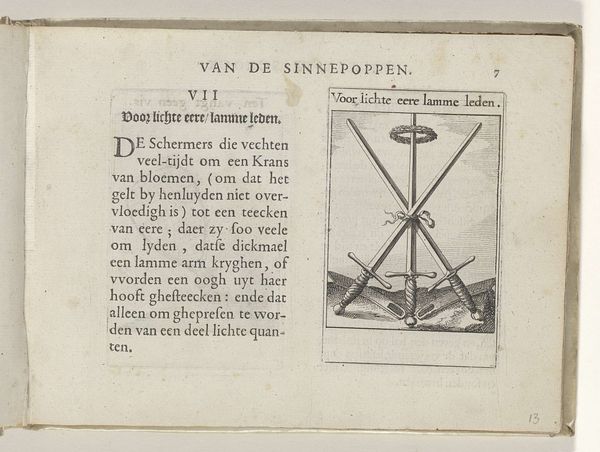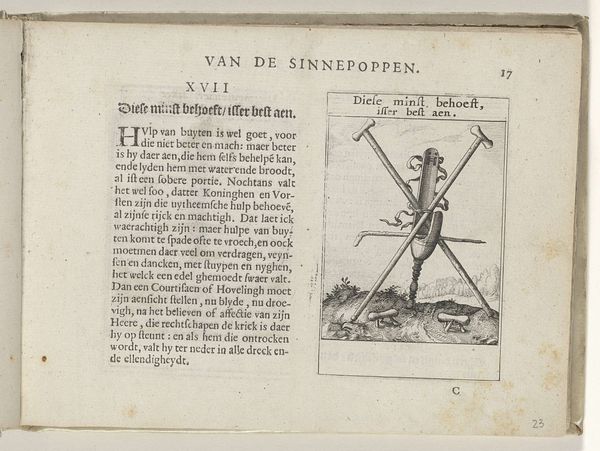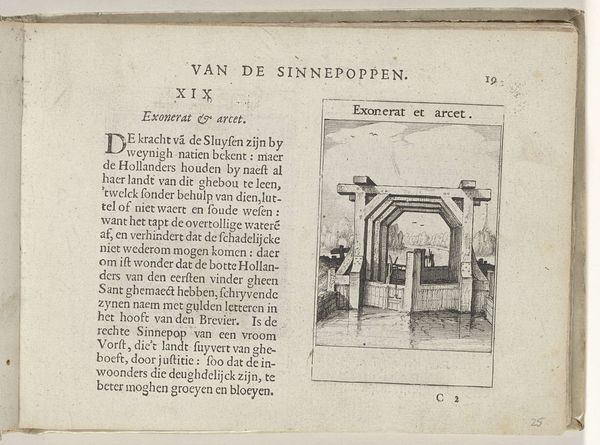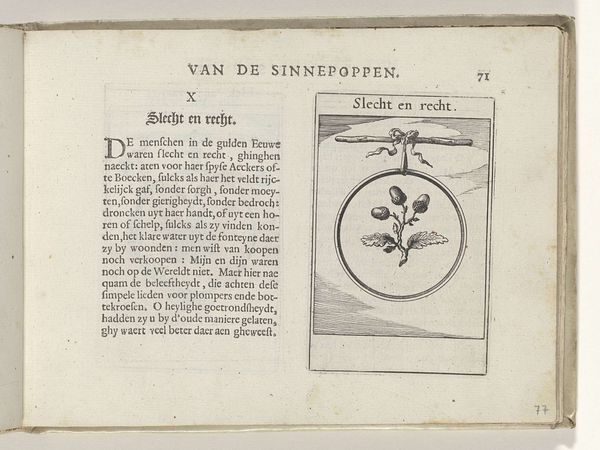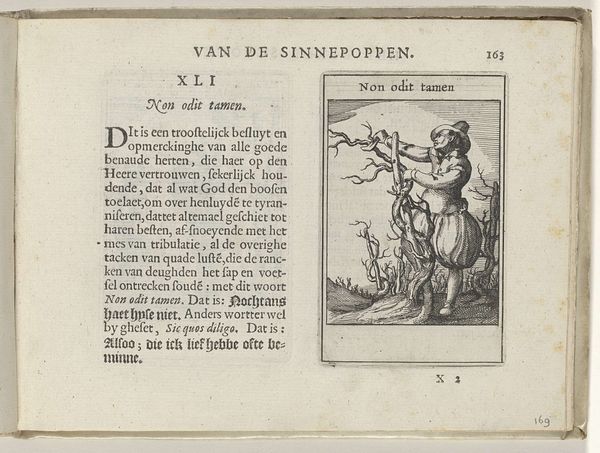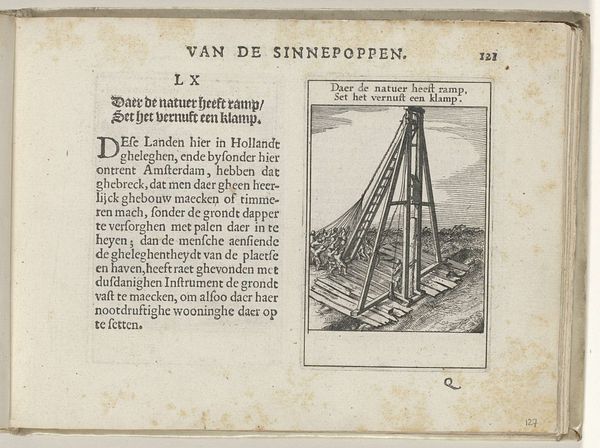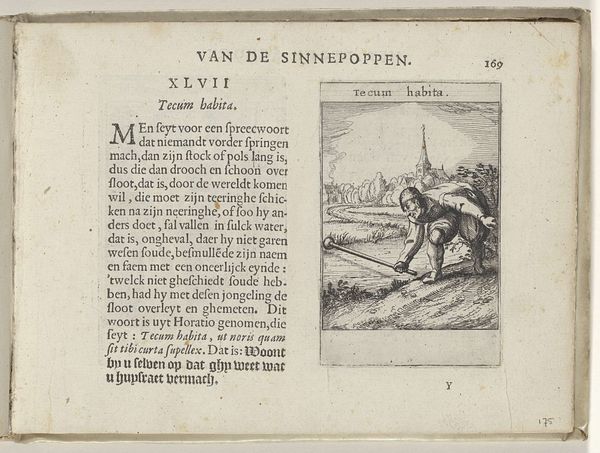
Dimensions: height 137 mm, width 188 mm, height 95 mm, width 60 mm
Copyright: Rijks Museum: Open Domain
Curator: Here we have an engraving from 1614 titled "XXV Die mij coopt, en kent mij niet" by Roemer Visscher, part of a larger series called "Sinnepoppen." It is currently housed in the Rijksmuseum. The printmaking process immediately draws my attention: the precision of the lines achieved through engraving gives it a stark, almost industrial feel, despite the Baroque trappings of the subject. Editor: Immediately, I feel this intense contradiction radiating from the piece, like a gilded cage. The sharp, etched lines and limited tonal range create an aura of austerity and confinement around symbols of power, almost undermining their grandeur. Curator: The composition centers on crossed scepters beneath a royal crown. Visscher utilized the readily available materials of the time, and the printing process facilitated wider dissemination of these images to a burgeoning merchant class hungry for knowledge and status. Its existence relies on accessibility. Editor: But those scepters, while beautifully rendered, seem so fragile, don't they? And the crown, perched above them, looks almost precarious, about to topple. I feel a sense of unease, of impending instability, like the very symbol of authority is teetering. Maybe it's the sharp contrast with what I think of a monarch should symbolize? Curator: Visscher's prints often contained moralizing emblems, commenting on society and human folly. "Die mij coopt, en kent mij niet" translates to "He who buys me, knows me not," and this engraving underscores that sentiment. It hints at the superficiality of wealth and power. Editor: Yes, that makes sense with that heavy feeling, and suddenly that gilded cage takes on more meaning! Like the allure of power masks its inherent burdens. What strikes me most is how even now, centuries later, it holds a mirror to our own obsessions with status. You know what I mean? Curator: Indeed, the print is less an celebration and more an economic observation. It reveals the materials, process, labor, and consumption intrinsic to society. Editor: Absolutely. A tiny artifact that speaks volumes. Curator: And it underscores how our perception of value changes over time depending on how we contextualize both what is literally presented, as well as how something came to be in the first place.
Comments
No comments
Be the first to comment and join the conversation on the ultimate creative platform.
